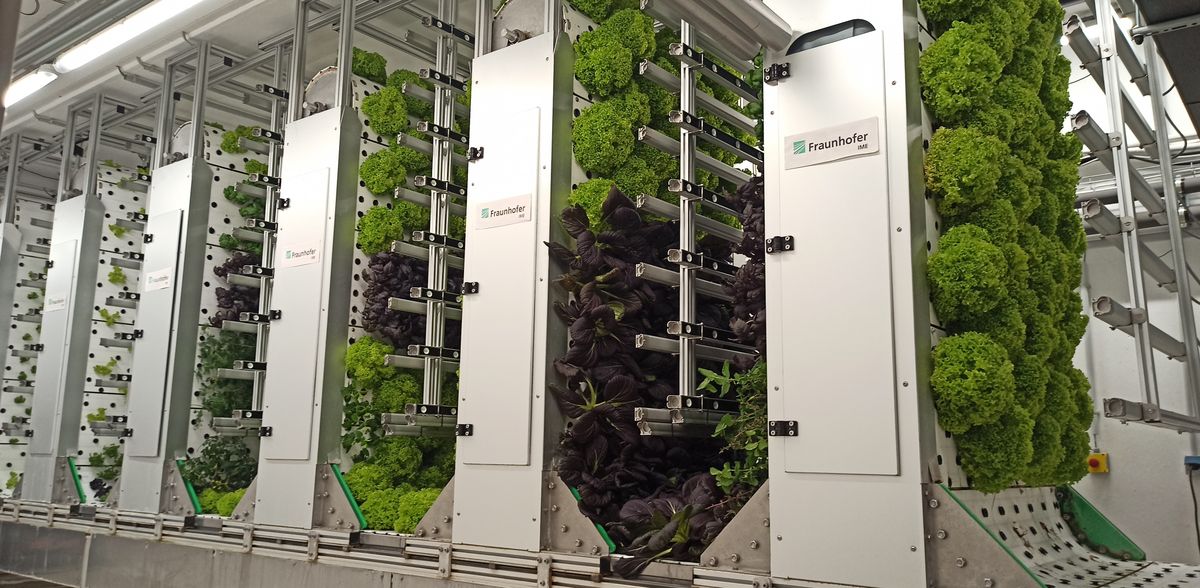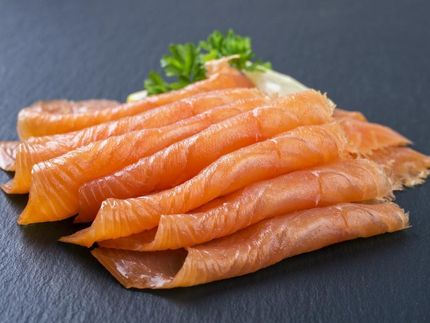Nutrition of the future
In order to produce protein-rich foods sustainably, new protein sources offer an alternative to meat, milk and the like. In the lead project "FutureProteins", six Fraunhofer Institutes have developed closed, space-saving indoor cultivation systems for the year-round, climate- and season-independent production of proteins from alternative sources. In a further step, the proteins and raw materials obtained from plants, fungi, algae and insects were also combined with each other for the first time and processed into prototypes for foodstuffs. The resulting novel products and meat alternatives are particularly valuable in terms of nutritional physiology.
Increasing environmental problems, extreme weather conditions, soil and water pollution from pesticides and fertilizers are making it difficult to supply the population with nutritionally valuable foods and proteins in many regions of the world. As a result, the focus is increasingly shifting to sustainable nutritional solutions. Alternative protein sources that can replace animal-based foods such as meat, fish, eggs and milk offer a solution. Researchers in the Fraunhofer lighthouse project "FutureProteins" are focusing on alternative proteins from plants, insects, fungi and algae. Six Fraunhofer Institutes (see below) are pooling their expertise to sustainably tap into new sources of protein with specially developed indoor cultivation systems that can be used all year round and are independent of space, climate and location, and to produce food from them. The special feature: by-products are largely used for the production of further protein raw materials - in line with the circular economy. In addition to four indoor agricultural cultivation systems - vertical farming for plants, insect farming for insects, bioreactors for fungi and photobioreactors for cultivating algae - the researchers have developed a range of tasty foods for the food industry. The creations range from burgers to gluten-free breads and desserts.
Potato pomace for mushroom fermentation and as insect feed
"In view of climate change, it was important to us that all of the newly developed indoor facilities can be used regardless of location, area and season, thus ensuring year-round, local and sustainable cultivation of the various raw materials," says Dr. Marc Stift, scientist and project coordinator at the Fraunhofer Institute for Molecular Biology and Applied Ecology IME in Aachen. The four plants are also interlinked: the side streams from the different processing stages can be used to cultivate other protein systems. "For example, potatoes are finely chopped after cultivation to extract starch and proteins. What remains is an aqueous medium and potato pomace. This potato pomace contains fibre, which was identified in the project as an excellent fermentation substrate for fungi," explains Dr. Stephanie Mittermaier, project coordinator and scientist at the Fraunhofer Institute for Process Engineering and Packaging IVV in Freising. Nitrogen-rich side streams from insect production can also be used as plant fertilizer. The vegan meat alternatives developed at the Fraunhofer IVV combine different protein sources such as peas and mushrooms. The result is particularly juicy burger patties with an improved nutritional profile.
Innovative vertical farming system: peas on the ups and downs
With the OrbiPlant® technology developed at the Fraunhofer IME, researchers have succeeded for the first time in growing peas efficiently indoors. The conveyor belt-based system not only makes the use of pesticides obsolete, but also enables a space-saving cultivation method that saves 95 percent of water consumption and 50 percent of fertilizer requirements. The system moves in waves so that the plants inserted into the conveyor belt - following the movements of the system - grow both upwards and downwards and thus also in waves, which enables space-saving cultivation. One advantage of this design is that the lighting system used shines into the valleys created by the downward movement of the undulating conveyor belt, allowing air to escape upwards and avoiding the heat build-up associated with conventional stacked constructions. The system is characterized by integrated natural air conditioning, which significantly reduces air conditioning costs. The suspended plants are aeroponically supplied during the up and down movement of the conveyor belt. "Aeroponics is a special substrate-free cultivation method for plants. The roots of the plants hang inside the conveyor belt and are sprayed with a solution of water and nutrients. Compared to hydroponics, where the roots are in the nutrient solution, aeroponic irrigation dramatically reduces the amount of water in the plant," explains Stift. Substrate-free cultivation has another advantage: in contrast to cultivating legumes in the open field, the plants are clean and the entire biomass, including the leaves and roots, can be used directly for protein production without prior washing.
Vegan meat substitute: burger patties made from a pea and mushroom mixture
Researchers at the Fraunhofer IVV in Freising are working on the development of high-quality, tasty foods from various protein sources. A food technology center with existing pilot plants for the production of meat and milk alternatives as well as baked goods at the site near Munich offers ideal conditions for developing foods to market maturity. Thanks to state-of-the-art analytical methods, the researchers can evaluate individual raw materials in terms of their composition, functional properties and sensory characteristics such as taste and smell. "The aim is to combine the protein systems with their respective best properties, to optimize their sensory and functional properties and thus create new products such as vegan meat alternatives," says Mittermaier. The results of the research work within FutureProteins are a series of prototypes with high consumer acceptance: in addition to burger patties and vegan meatballs made from a mix of pea protein and mushroom mycelium, both the taste and smell profile of gluten-free bread made from insects, desserts and soft ice cream made from various plant proteins and pasta filled with algae were rated extremely positively by tasters. "We want to appeal to the mass market with the burger patties made from peas and mushrooms and the filled pasta. We see the insect sandwiches more as a niche product," says the researcher. "Comparable burger patties made from a combination of different protein sources are not yet available to buy. The mixture of peas and mushroom mycelia produces particularly juicy burgers with greatly reduced levels of artificial flavors and additives such as hydrocolloids, which are usually part of many recipes due to their gel- and texture-forming properties." Mittermaier and her team will be presenting this and other research work at the IFFA trade fair in Frankfurt from May 3 to 8, 2025. The researchers are pursuing the goal of licensing the food prototypes developed, as well as the systems created in the project, to industry.
Note: This article has been translated using a computer system without human intervention. LUMITOS offers these automatic translations to present a wider range of current news. Since this article has been translated with automatic translation, it is possible that it contains errors in vocabulary, syntax or grammar. The original article in German can be found here.






























































